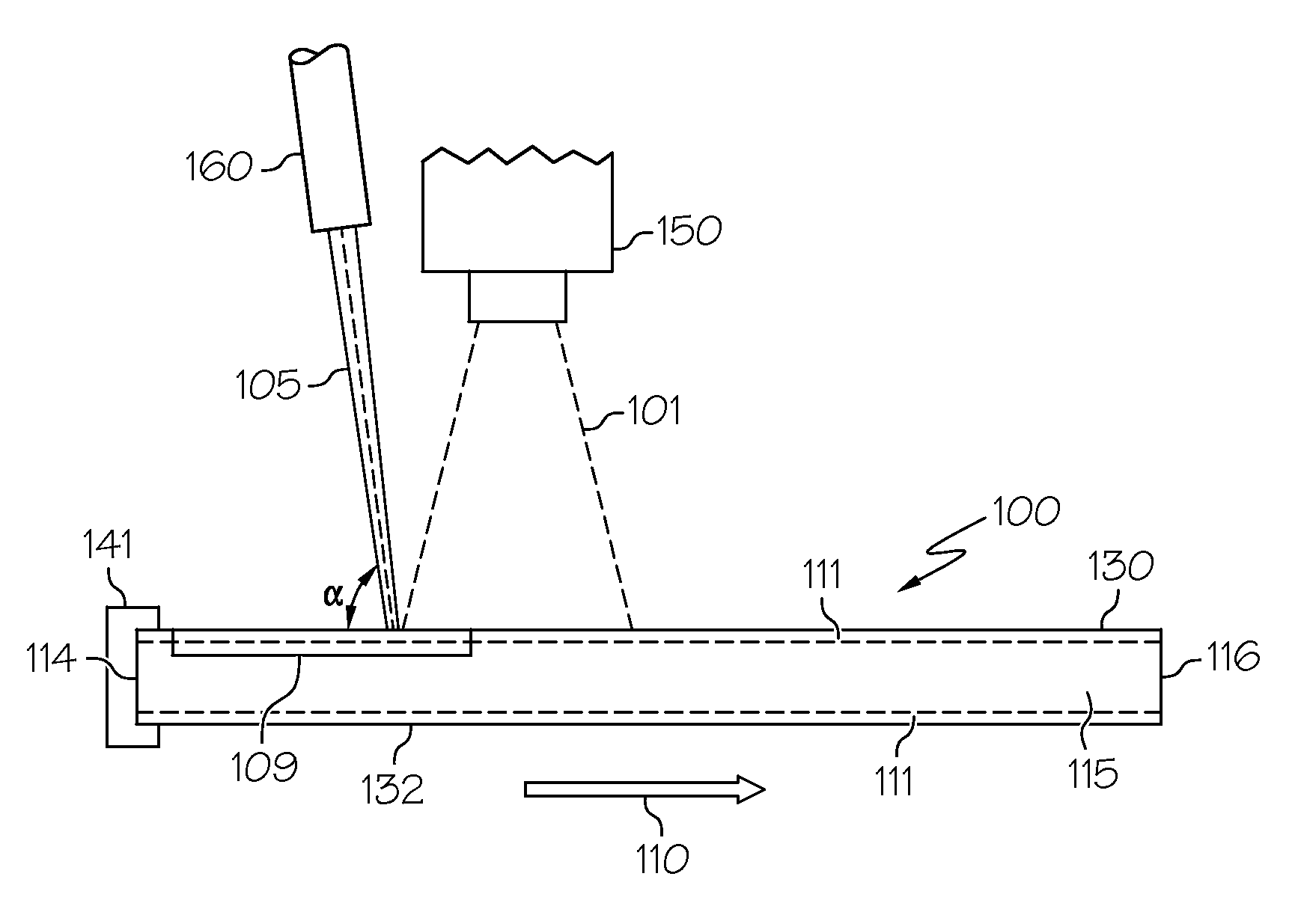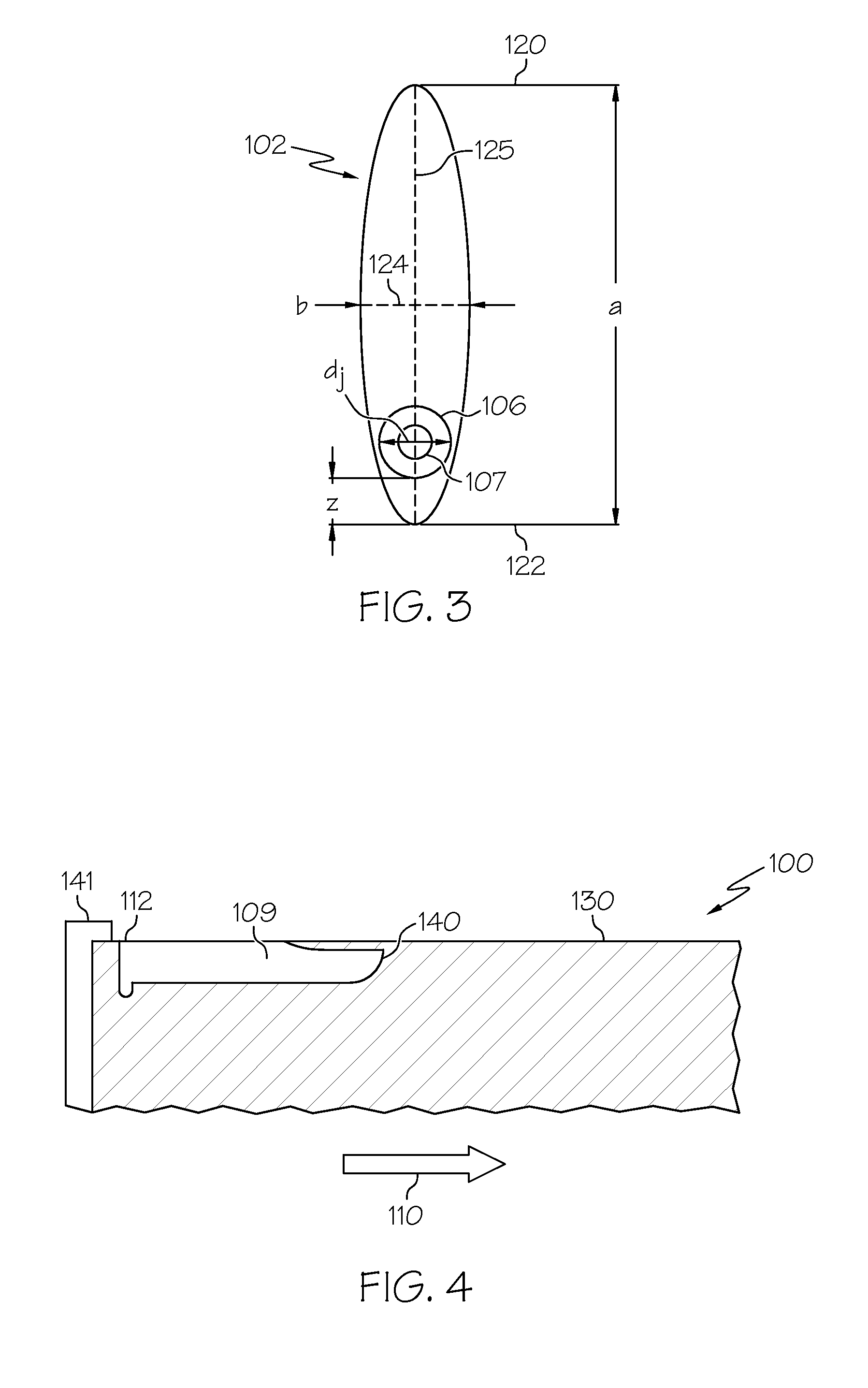Methods of separating strengthened glass substrates
a technology of reinforced glass and substrates, applied in glass rolling apparatus, glass making apparatus, manufacturing tools, etc., can solve the problems of uncontrollable full-body separation rather than the formation of a scribe line, poor edge characteristics, and further compromise of the reliability of such scribe-and-break processes
- Summary
- Abstract
- Description
- Claims
- Application Information
AI Technical Summary
Benefits of technology
Problems solved by technology
Method used
Image
Examples
Embodiment Construction
[0021]Reference will now be made in detail to various embodiments of methods for separating sheets of strengthened glass substrates, examples of which are illustrated in the accompanying drawings. Whenever possible, the same reference numerals will be used throughout the drawings to refer to the same or like parts. As described herein, methods for separating strengthened glass substrates generally comprise weakening the strengthened glass substrate along a line of desired separation and then backward-propagating a full-body crack long the weakened line of desired separation. A laser beam may be translated on a surface of the strengthened glass substrate from a first edge to a second edge along the line of desired separation to create the weakened area. The translation of the laser beam with respect to the strengthened glass substrate may form an initial scribe line within the glass substrate, or create a stress field, along the line of desired separation. The full-body crack is then...
PUM
| Property | Measurement | Unit |
|---|---|---|
| length of time | aaaaa | aaaaa |
| wavelength | aaaaa | aaaaa |
| wavelength | aaaaa | aaaaa |
Abstract
Description
Claims
Application Information
 Login to View More
Login to View More - R&D
- Intellectual Property
- Life Sciences
- Materials
- Tech Scout
- Unparalleled Data Quality
- Higher Quality Content
- 60% Fewer Hallucinations
Browse by: Latest US Patents, China's latest patents, Technical Efficacy Thesaurus, Application Domain, Technology Topic, Popular Technical Reports.
© 2025 PatSnap. All rights reserved.Legal|Privacy policy|Modern Slavery Act Transparency Statement|Sitemap|About US| Contact US: help@patsnap.com



